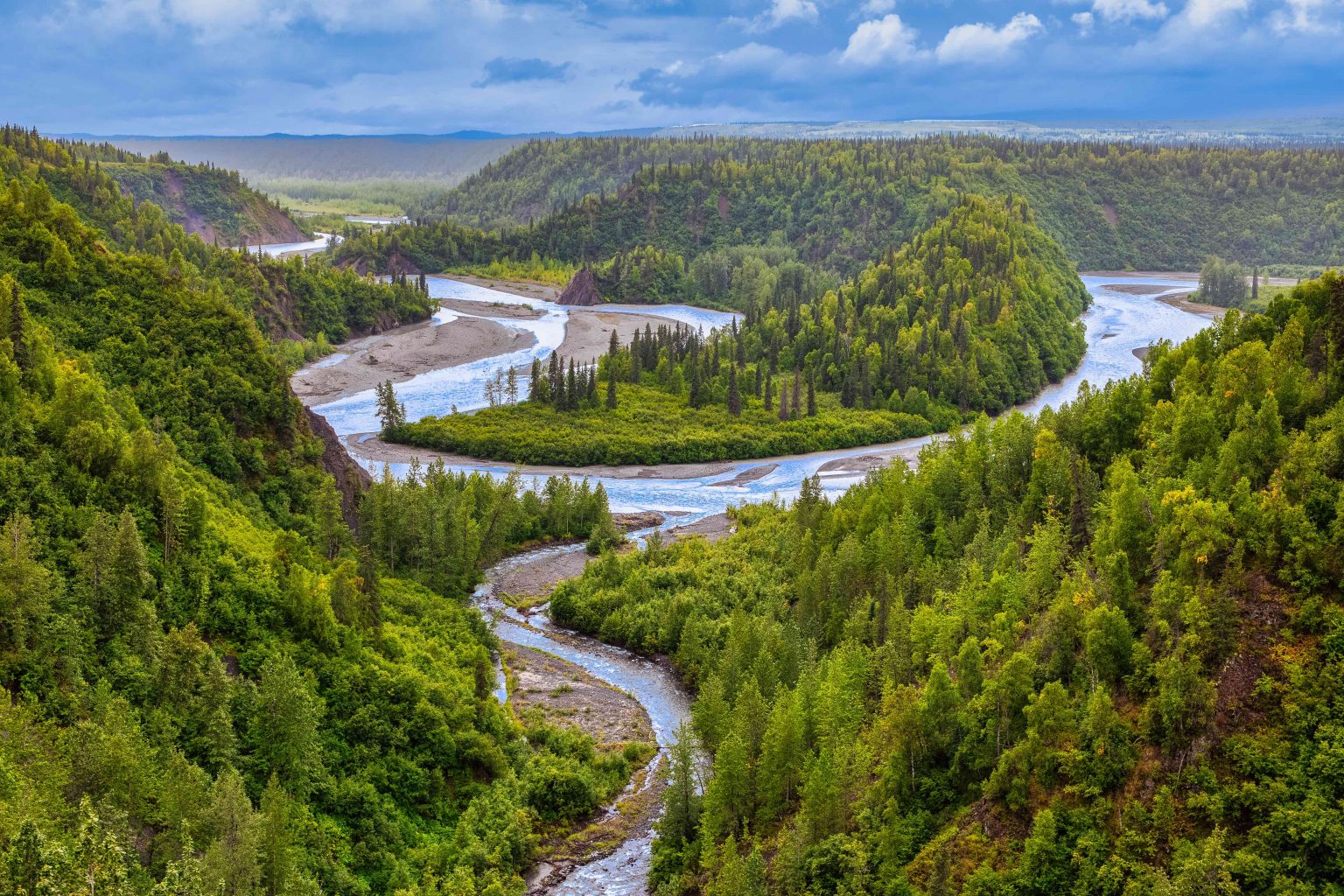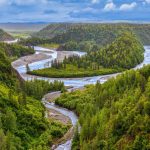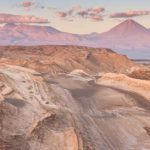
Taiga biomes are found across the globe on three separate continents. Many different species make their home in the biome. The taiga also plays various other roles in the Earth’s ecosystem. Learn more about those roles and the threats facing the taiga with these 50 facts about taiga biomes.
- 01The taiga includes an estimated 17 million km² or 11.5% of the Earth’s land area.
- 02The taiga’s average daily temperature typically varies between -5 and 5°C.
- 03In winter, temperatures in the taiga can drop as low as -50°C.
- 04Growing seasons in the taiga only average around 130 days per year.
- 05The Finnish and Scandinavian taiga have some of the longer growing seasons, averaging at most 150 days per year.
The taiga forms one of the world’s Intact Forest Landscapes (IFLs).
Scientists define IFLs as places where forest ecosystems and their habitat plant community forms an unbroken natural landscape. They also lack major forms of human development or habitat fragmentation. The latter, in particular, allows IFLs to contain and support a vast diversity of plant and animal species.
IFLs also play very important roles in Earth’s environment, such as air and water purification, carbon sequestration, erosion and flood control, as well as nutrient cycling. Scientists first began mapping IFLs in the 1990s, with Greenpeace Russia issuing the first regional maps in 2001. The release of complete global maps of the world’s IFLs followed between 2005 and 2006. This allows conservation groups to accurately track and record the health of the world’s IFLs over time. Currently, the taiga forms an estimated 44% of the world’s IFLs, with tropical and subtropical forests forming the rest.
The permafrost varies in the taiga around the world.
Permafrost refers to a phenomenon where soil remains either completely or partially frozen all year round. Scientists further divide this into continuous and discontinuous permafrost. In the case of the former, this means the permafrost never melts. This usually results from a climate where the average temperature constantly remains below zero.
In contrast, discontinuous permafrost means the ground only stays frozen in sheltered areas. This too, similarly, is because of climates where the average temperature slightly rises above zero at certain times of the year. Most of the Russian taiga experiences continuous permafrost, although parts of it have discontinuous permafrost. Similarly, the rest of the world’s taiga experiences discontinuous permafrost.
Parts of the taiga experience both the midnight sun and polar night phenomena.
The midnight sun refers to a phenomenon where the Sun never sets during the summer. Similarly, the polar night refers to a phenomenon where the Sun never rises during winter. In both cases, the phenomena only take place near the poles, as a result of the planet’s tilt affecting the way the Sun’s light reaches those regions during summer and winter.
Parts of the taiga that experience both phenomena mostly lie north of the Arctic Circle, or 63°30’ N latitude. These include Arkhangelsk Oblast and Krasnoyarsk Krai in Russia. That said, some parts of the taiga south of the Arctic Circle also experience both the midnight sun as well as the polar night. These include North Ostrobothnia, as well as Lapland in Finland, among other places.
The taiga generally receives only low precipitation.
In fact, it is one of the driest places on Earth, with only the world’s deserts receiving even less rainfall. On average, the taiga only receives at most 1 meter of precipitation per year, with rain only falling in summer. Otherwise, moisture comes to the biome in the form of fog or snow, with the latter falling for 9 months per year.
That said, the taiga also enjoys very low temperatures. This means that it also has even lower rates of evaporation. This ironically gives the taiga plenty of water to support its biodiversity, in contrast to places like the steppe.
Glaciers once covered parts of the modern taiga.
In fact, during the last Ice Age, ice sheets covered most of the land that now includes the taiga biome. In some places, the ice formed glaciers, massive formations of ice so heavy they plowed away the soil in front of them down to the bedrock. Even then, the weight of the ice fractured and depressed the rock, forming deep channels.
When the Ice Age ended, the glaciers and ice sheets melted, forming lakes and various other water bodies in what became the taiga. These prove especially common in North America, with the Great Lakes as the most prominent example. Finland’s Lakeland has similar origins, as do Lake Ladoga and Lake Onega in Russia.





